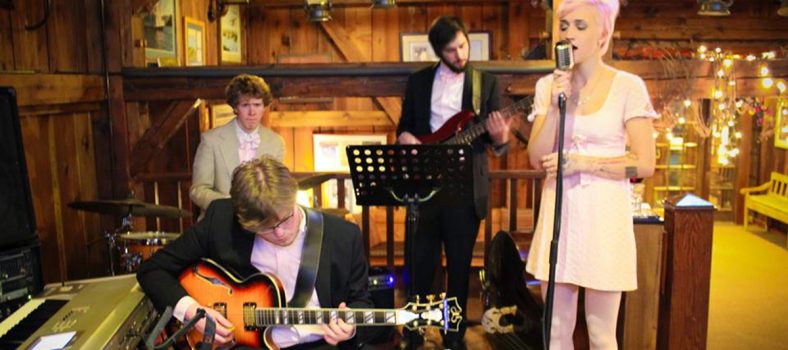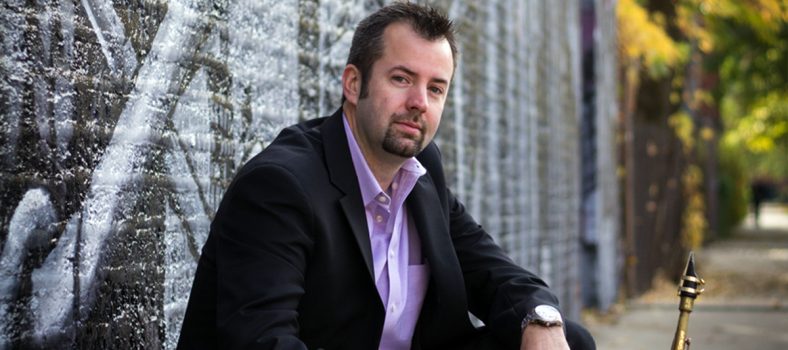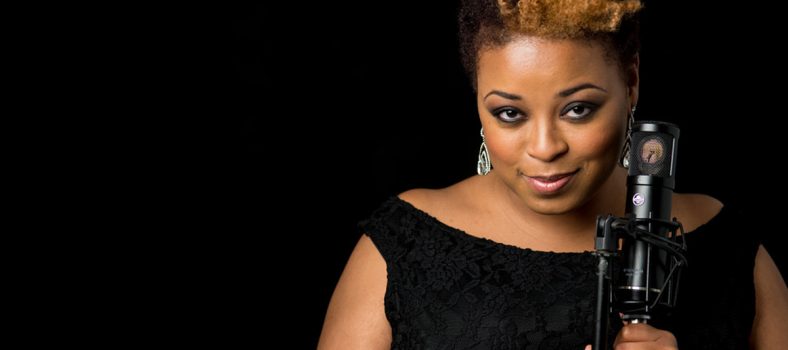Thelonious Sphere Monk, III (T.S. Monk) is an internationally acclaimed jazz drummer, composer, bandleader, and vocalist. Lauded by critics and jazz fans alike as the true musical heir to his father, the legendary jazz composer and pianist Thelonious Monk, T.S. Monk has paved his own path to success, inspiring a new generation of jazz enthusiasts with his innovative and infectious music. Through his work as the chairman of the Thelonious Monk Institute for Jazz, which he and his sister, Barbara Monk, created to honor their father’s rich legacy, Monk has also supported jazz education and brought an international spotlight to the music.
As the son of Thelonious Monk, T.S. Monk grew up among some of the greatest jazz musicians of all time. His parents’ home in New York City was a gathering place for jazz legends such as Art Blakely, John Coltrane, Miles Davis, Dizzy Gillespie, Max Roach, Sonny Rollins and Horace Silver, among many others. When Monk was five years old, he accompanied his father to a recording session with renowned jazz drummer Max Roach. Monk was drawn to the drums that day and Roach gave him his first pair of drumsticks. However, his father and mother, Nellie Monk, never coaxed Monk or his sister to pursue music. “There was no obligation for me to be anything other than his son,” says Monk. “He never even discussed music with me. He let me fall in love with the music on my own.”
When he was 13, Monk went to a private boarding school, where he earned a reputation as a rabble-rouser. While there, he secured a pair of drumsticks from a dorm mate, and practiced at school, playing on pillows and flat surfaces for two years before telling his father he wanted to play the drums when he came home the summer he was 15 years old. Art Blakely got him his first full drum set, and Max Roach became his teacher. Five years later, in 1970, after he had graduated from high school and spent more time perfecting his craft, Monk joined his father’s quartet and toured with him until the elder Monk retired in 1975. “My father didn’t cut corners or make any accommodations for me,” says Monk. “He gave me the opportunity to earn my place on the bandstand. Fortunately, I did.
The mid-1970s was a difficult time for jazz musicians. Clubs had closed down, record companies were not signing jazz artists, and scores of musicians had nowhere to work. So Monk, like many of his contemporaries, went into R&B. “All this jazz flowed into R&B music, bringing with it the sounds of the electric piano and the open and close high hat cymbals and the guitar—not like Elvis Presley, but like jazz great Wes Montgomery,” says Monk. “I was part of a real force that brought radical change to R&B.”
Monk toured with the group Natural Essence, which at various points claimed jazz luminaries such as Noel Pointer, Nat Adderley Jr., Earl McIntyre and Buddy Williams among its members. He later formed an R&B group with his girlfriend at the time, Yvonne Fletcher, who had been a vocalist for Natural Essence, and his sister, Barbara, affectionately known as “Boo Boo.” The group, T.S. Monk, released three albums on Mirage Records, on which Monk played drums, arranged music, and sang. Their successful debut album, House of Music (1980) featured the international mega hit single, “Bon Bon Vie (Gimme the Good Life),” which made Billboard’s Hot 100 chart and peaked at #11 on Billboard’s Hot Soul Singles chart and at #13 on the Hot Dance/Disco Songs chart. The group, T.S. Monk, received the award for Best New Artist at Don Cornelius’ inaugural Soul Train Music Awards in 1980. “Bon Bon Vie” has remained in steady rotation at R&B radio formats for the past 35 years, and has been sampled by several hip hop and R&B artists including Public Enemy and Blackstreet. House of Music was followed by the release of More of The Good Life (1981) and Human (1982). “After I spent hundreds of hours all these years trying to become the next Max Roach, I became well-known as an R&B singer,” he notes.
Shortly after his father passed away in 1982, Yvonne and Barbara died of breast cancer within months of each other in October, 1983, and January, 1984. Following their tragic deaths, Monk walked away from playing and recording music for several years. In 1987, he took over as chairman of the board of the Thelonious Monk Institute of Jazz. Through his work with the Institute, Monk became an enthusiastic spokesperson for jazz. “I was back in music even though I wasn’t playing,” he says.
Monk later returned to performing and recording jazz. In 1992, he formed the T.S. Monk Sextet, which received rave reviews from the moment they hit the stage at the 1993 Playboy Jazz Festival at the Hollywood Bowl. That year, the group’s first CD, Take One, was released on Blue Note Records, and hit the top of the jazz charts. They released two more CD projects with Blue Note Records—Changing of the Guard and the critically-acclaimed album, The Charm. One of the most unique groups on the circuit, the jazz sextet has been heard at the White House, various festivals and concert halls, legendary jazz clubs and landmark institutions in the United States, Europe, Asia and the Middle East including the Kennedy Center (Washington, DC), Lincoln Center (New York, NY), Central Park (New York, NY), the JVC Jazz Festival (New York, NY), the North Sea Jazz Festival (Rotterdam, Netherlands), the Newport Jazz Festival (Newport, RI), Montreal Jazz Festival (Montreal, Canada), Toronto Jazz Festival (Toronto, Canada), the Nice Jazz Festival (Nice, France), the Umbria Jazz Festival (Umbria, Italy), Playboy Jazz Festival (Los Angeles, CA), ESSENCE Festival (New Orleans, LA), St. Lucia Jazz and Arts Festival (St. Lucia, Caribbean Island), Birdland (New York, NY), Yoshi’s (San Francisco, CA), Jazz at the Bistro (St. Louis, MO), Basin Street (Rio de Janeiro, Brazil), Catalina Jazz Club (Los Angeles, CA) and countless others venues. T. S. Monk Sextet has received rave reviews in publications such as the Los Angeles Times, Hollywood Reporter, and Variety, among others. Monk has also been featured on television talk shows, including CBS Sunday Morning.
To celebrate his father’s 80th birthday, Monk paid tribute to Thelonious Monk’s extraordinary contributions to jazz with the all-star recording, Monk on Monk. The 1997 recording featured performances by an expanded version of Monk’s sextet and 23 guest artists, including jazz greats Herbie Hancock, Wayne Shorter, Arturo Sandoval, Dianne Reeves, Nnenna Freelon and Howard Johnson, among others. The critically-acclaimed all-star album received the Record of the Year Award at the first annual New York Jazz Awards, and Downbeat magazine’s prestigious 63rd Annual Reader’s Poll Award.
In his following CD, Crosstalk, released in 1999 by Encoded Music, Monk expanded into new territory, blending elements of pop and funk with jazz to create something that was uniquely his own—in his words, “a cross between Art Blakely and the Jazz Messengers and Blood Sweat and Tears.” In Higher Ground, Monk’s 2003 release on Sin-Drome Records, he ventures into the realms of smooth jazz and funk.
Monk has brought the same energy and innovation that defines his music to his position as chair of the Thelonious Monk Institute for Jazz. Over the past 27-years, the Washington, D.C.-based Institute has become an important catalyst for identifying jazz’s new voices, honoring its present and past masters, and promoting jazz education across the country and around the world. Monk was the driving force behind the creation of the Institute’s highly acclaimed initiative—the annual International Jazz Competition. He was also instrumental in the creation of the Institute’s two-year program in Jazz Performance, which is currently housed at the Herb Alpert School of Music at the University of California, Los Angeles (UCLA). He has supported other Institute education programs, including the Jazz Sports program, which links music and basketball through partnerships between inner-city high schools and NBA teams in Los Angeles, New Orleans, and Washington, DC; Jazz in the Classroom; Jazz in America, a national jazz curriculum that the Institute created as an adjunct to American history and social studies curricula at the 5th, 8th and 11th grade levels; and the Institute’s newest online curriculum, “The Blues and Jazz: Two American Classics,” which traces the development of the blues and its influence on jazz.
Monk also was instrumental in the return of jazz to television after a 25-year absence. For two consecutive seasons, December 1996 and January 1998, ABC-TV aired “A Celebration Of America’s Music,” a program cosponsored by Nissan and The Thelonious Monk Institute. Monk and Institute president, Tom Carter, gathered an historic assemblage of artists for these network specials, which were hosted by Bill Cosby. The all-star lineup of guest artists included Aretha Franklin, Herbie Hancock, Tony Bennett, Natalie Cole, Al Jarreau, Pat Metheny, Nnenna Freelon, Dave Brubeck, Jon Secada, and K.D. Lang, among others. In what was a highlight of the program, Monk performed his father’s signature tune, Round Midnight. In 1993, under Monk’s leadership, the Institute coordinated “A White House Jazz Festival,” the first “In Performance at The White House” PBS special taped with President and Mrs. Clinton.
Monk continues to tour the world performing and promoting jazz. In 2012, he collaborated with Herbie Hancock and UNESCO in creating “International Jazz Day,” a gathering of jazz musicians from 196 different countries. The celebration was held in Istanbul, Turkey, and was broadcast live to over one billion people around the world. T. S. was co-host for the third annual event, which was held in Osaka, Japan on April 30th, and was an even bigger success. Toshiko Akiyoshi, John Beasley (Musical Director), Kris Bowers, Dee Dee Bridgewater, Terri Lyne Carrington, Theo Croker, Sheila E., Pete Escovedo, Roberta Gambarini, Kenny Garrett, James Genus, Roy Hargrove, Lalah Hathaway, Terumasa Hino, Earl Klugh, Marcus Miller, Gregory Porter, John Scofield, Wayne Shorter, Esperanza Spalding, Lew Tabackin, Steve Turre and other internationally acclaimed artists were among the performers at this year’s event.
Monk recently released an album with Belgian jazz accordionist, Rony Verbiest. The album, Verbiest Meets Monk: Father and Son is currently available internationally. This fall, Monk will release a contemporary rendition of his father’s classic, “Trinkle Tinkle.” Monk recorded part one of his first live CD, Ebony Moonbeams in New York City at Ginny’s Supper Club at Harlem’s Red Rooster. Part two of the recording will be completed in January 2015. He is also writing a book on his relationship with his father. In 2017, there will be a year-long, global celebration of the 100th anniversary of Thelonious Sphere Monk’s birthday and the 30th Anniversary of the Thelonious Monk Institute of Jazz.
“Jazz is played in every country in the world, in every season of the year” says Monk. “It is the universal music language of the planet earth.”





